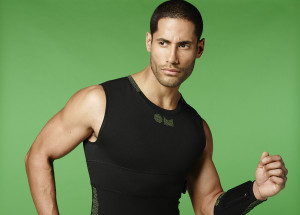
According to a Grand View Research report released in January, protection and military applications accounted for the largest market share (27.5 percent) for smart textiles in 2012. The rest of the pie was split among architecture (20.6 percent), sports/fitness (17.3 percent), transportation (14.8 percent), fashion and entertainment (12.4 percent), and medical (7.3 percent). But University of Minnesota Associate professor Lucy Dunne points out, “The consumer industry is driven by sports and health. Larger technology advancements come from all sectors and often transcend a specific application.”
Virginia Tech professor Tom Martin considers the sports market the most frictionless pathway because it doesn’t face as many regulations as health care, military and protection applications. And, he adds, “In both sports and health, people are willing to pay the extra cost.”
Heapsylon CEO Davide Vigano sees a trifecta. “In order to become truly mainstream, wearable devices will have to answer three questions: As a consumer, do I want to wear this device? What does it do for me today and tomorrow? What do people think of me wearing it? The cool devices are the ones that are small, noninvasive and part of the everyday consumer workflow. I truly believe that in the next five years, each individual will wear at least one smart garment every day.”

Martin thinks interactive garments will become commonplace when people start viewing them as an ecosystem rather than as a standalone product. “We’re starting to see that in smart watches—watches that work in conjunction with something else,” he says. “The other turning point will be when people realize there’s money to be had in selling not just a garment, but a service. Cell phone companies don’t make money selling cell phones; they make it providing services. You see companies like Nike and Adidas starting to make movement in that direction.”
“Our challenges are similar to electric cars versus gasoline cars,” says Hexoskin CEO Pierre-Alexandre Fournier. “Cost is essentially a matter of volume at this point. We need to build the industrial capacity. In a few years, we’ll be able to make smart clothing at a cost not very different from regular clothing. We’re soon going to reach the point when it becomes normal to wear biometric clothing.”
OMsignal Founder Stéphane Marceau is succinct: “The key for adoption is education and awareness.”
 TEXTILES.ORG
TEXTILES.ORG


